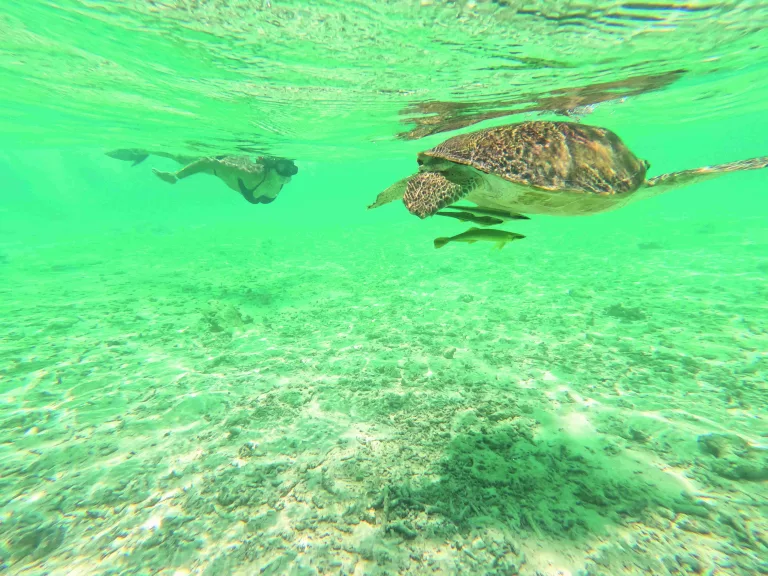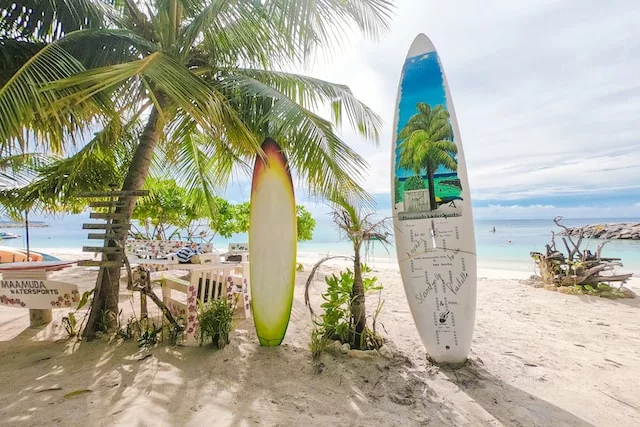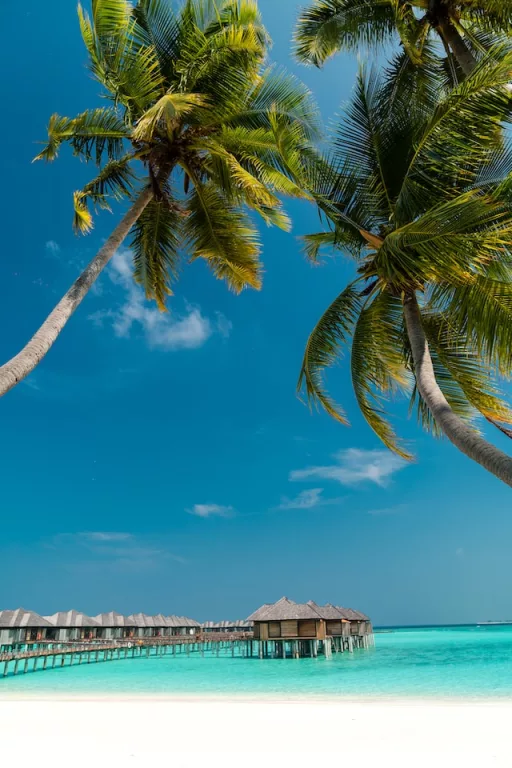[ad_1]
While quite a number of Maldivian resort-islands rank among Earth’s most dizzyingly expensive destinations, its so-called “local islands” offer paradise on a shoestring. Romi Boom finds her happy place in South Malé Atoll
The green turtle in whose slipstream I was swimming was well over a metre long. A big one. I’d been working hard for this moment, encouraged to dive deep by my Bangladeshi snorkelling guide. When he beckoned me to come “quick quick”, I surfaced for breath and swam as strongly as I could muster. Suddenly I saw it: a surreal vision in this reef of a thousand sights aptly called Coral Garden. Among emperor angelfish, harlequin sweetlip, coral hind, nemo fish and others I couldn’t identify, a colossal creature came into sight.
Both turtle and I propelled ourselves through the clear water of the house reef at Biyadhoo resort island. I was on a day excursion, snorkelling from a speedboat, and I wasn’t permitted to encroach on the top-dollar paying resort guests.
Even near the beach, the reef was teeming with tropical fish. The turtle was aware of me, but didn’t seem anxious enough to put distance between us. I got a closer look; along for the ride were three sucker fish, thin as pencils, below the shell of the huge flat stomach.
After sharing my company for a good few minutes, the turtle disappeared like a phantom. Just another tourist on the full-day excursion from Maafushi.

My decision to do the Maldives on a shoestring was motivated equally by the lack of depth in my pocket and the desire to have an authentic experience. I would spend my rands on some of the local islands rather than an upmarket resort island that caters primarily to people travelling with richer currencies. I opted for South Malé Atoll because there are regular speedboat transfers between the airport and the local islands. Seaplane transfers break the bank. At the other end of the spectrum, a government ferry service that used to be popular with locals (and cost a mere $2 a trip) has been discontinued because of the pandemic.
The moment I stepped off the speedboat that transported us from Malé’s airport to Maafushi, I knew I’d made the right decision. One of the biggest and most popular local islands in the Maldives, it is just 27km away from the capital, is 1.27km long and 265 metres wide, and is home to 2 700 people. Maafushi is where budget tourism in the Maldives took off, and it offers a plethora of hotels and guest houses.
Our hotel, Sunrise Beach, had sent a tuk-tuk to the quayside for our luggage. We walked to the opposite side of the island, a 10-minute stroll past restaurants, excursion operators, watersports kiosks, dive centres, shops selling souvenirs and clothes, and small grocery stores. Dusk was approaching and the vibe was electric. Scooters, motorbikes and tuk-tuks whizzed past. It was cooking!
In the days that followed we floated in the shallows off Maafushi’s Bikini Beach; true to its name, it’s the only beach on the island where scantily clad bodies are allowed. It is small, but the beach is well-shaded. Although the coral here is denuded, the water is lukewarm and blissful. From our hotel room, our east-facing balcony overlooked the beach where locals go to swim – fully attired, of course.
We explored the island on foot, completing the circuit in a leisurely hour. At night we strolled the narrow lanes and more than a few dark alleys, never once feeling that our safety was compromised.

In compliance with sharia law, no alcohol may be brought into the Maldives nor consumed on any of the local islands (alcohol is available only on resort islands). Maafushi nevertheless has a very visible “safari boat” or floating bar offshore where tourists may go for a few toots, although we were given the run-around as to details of opening hours and how to actually get there. Although we spent long thirsty episodes at the quay, the promised gratis speedboat to the bar did not pitch, so we resigned ourselves to the mellow joys of Heineken 0%.
We visited Guraidhoo and Gulhi, two local islands where life still beats to the rhythm of yesteryear. While these islands have a modest offering of hotels and guest houses, a few beachside stalls selling cotton clothing and handicrafts, and even the odd jetski and kayak for hire, tourism is decidedly low-key, not a car or a bus in sight. Vaguely reminiscent of Africa’s Swahili coast, they are traditional to the core: unimposing mosques, veiled women in dark abayas, chimeras of Ilha da Mozambique or Stone Town in Zanzibar. Flamboyant trees added a splash of colour, frangipanis scented the air, children’s voices brought a joyful lilt to the streets. What I experienced most keenly, though, was a sustained sense of solitude and peace.
Stay Here
Sunrise Beach Hotel
On Maafushi, this modest three-star hotel is a modern block, but has big rooms with balconies and ocean views. The staff tries hard: they offer bicycles to explore the island and provide a variety of useful services – from airport transfer arrangements to snorkelling and other activities in the ocean.
R1 326 per double room pn, breakfast included
Tel +960 733 0606
sunrisebeach.maldives-hotelsresorts.com
Shoestring Holiday? Good To Know

In terms of affordability, September is a good time to fly to the Maldives, with return tickets between Joburg and Malé from R7 629 with Qatar. Of course, airline fees are fluctuating dramatically more than usual right now. A good bet is to use skyscanner.com to search for the most affordable flight combinations.
That said, Maldives gets most of its rain in August through October; it can be very wet, sometimes raining torrentially for entire days in September and October. Which can scupper your plans, even if the water is still warm. If you want sunshine and clear skies, you’d best wait until November when the clouds start to clear off. As the wet season draws to a close, it may still rain, but showers tend to be brief.
When you do get there, scheduled speedboat transfers from Malé’s Velana International Airport to Maafushi cost $25 pp one way.
Full-day trips to local islands with reef snorkelling, a dolphin safari and lunch on a sandbank cost $40 pp. Half-day trips are $30.
Take enough US dollars in cash to pay for excursions and transfers, or charge them to your credit card. The Maldivian currency is the rufiyaa (MVR), more or less even in value to the rand. You will need local money to buy victuals at the plentiful small supermarkets.
By Romi Boom
A version of this article originally appeared in the July 2022 print issue of Getaway
Follow us on social media for more travel news, inspiration, and guides. You can also tag us to be featured.
TikTok | Instagram | Facebook | Twitter
ALSO READ: Island escapes: Mantas, mojitos, Maldives!
[ad_2]
Source link
Jarastyle – #Living #vida #local #South #Malé #Atoll
Courtesy : https://www.getaway.co.za/destinations/world/island-escapes-living-la-vida-local-in-south-male-atoll/

